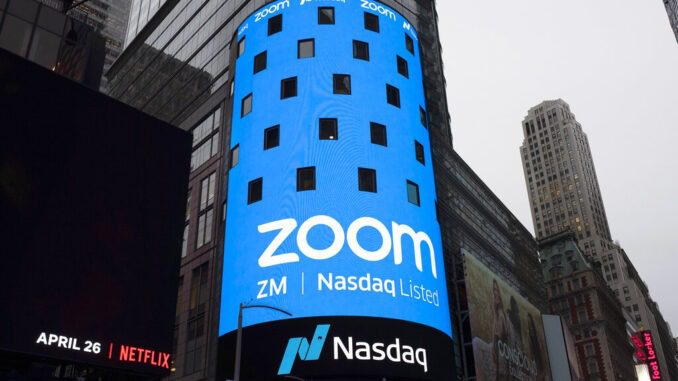
SAN RAMON, Calif. — Zoom’s astronomical growth is tapering off along with the pandemic, raising questions about whether the videoconferencing service’s immense popularity will fade as more people return to classrooms, offices and other places that have been off limits for the past year.
The deceleration emerged in an otherwise impressive quarterly earnings report released Monday. The stellar results capped a year in which Zoom’s name became synonymous with the way millions of people have been forced to gather in online video panels while being corralled at home.
Although Zoom continued to enjoy robust gains from November through January, its subscriber increases were significantly smaller than in each of the previous three quarters that unfolded during pandemic life.
Despite that widely anticipated slowdown, both Zoom’s quarterly earnings and revenue easily topped analysts’ projections, as did management’s forecast for the February-April period and the upcoming year. Those numbers helped lift Zoom’s stock price by nearly 9% in Monday’s extended trading, still leaving the shares well below their highs reached last autumn.
The deceleration in subscriber growth, which began late last summer, is causing some investors to fret that Zoom won’t be able to sustain its momentum as more people get vaccinated and life starts to revert to pre-pandemic patterns later this year.
Those concerns are the main reason Zoom’s once soaring stock price has dropped by about 30% from its peak reached last October. If the rally in Monday’s extended trading is replicated in Tuesday’s regular session, Zoom’s stock will still be worth more than five times what it was at the end of 2019.
Zoom finished January with 467,100 customers with at least 10 employees that were paying for the subscription version of its service. That was an increase of 33,400 customers from the previous quarter ending in October, far below the gains ranging from 63,500 subscribers to 183,500 subscribers in the previous three quarters of operation during the pandemic.
“Zoom has had an amazing year, but all good things must come to an end,” said Nucleus Research analyst Trevor White. “The fundamental problem remains, however: Zoom is not going to be able to keep up with the growth that it has seen.”
Even so, Zoom is far larger, more profitable and better known than it was before the pandemic upended society and turned its videoconferencing into staple. The San Jose, California, company now has nearly six times more subscribers than it did a year ago while its annual revenue that has quadrupled to $2.65 billion during the past fiscal year.
In its most recent quarter, Zoom posted revenue of $882 million, more than quadrupling from the same time in the previous year. The company turned a profit of $260 million in the last quarter compared to $15 million during the same period in the prior year.
Realizing that the demand for videoconferencing won’t be as great after the pandemic is over, Zoom has been introducing other features such as an internet phone service for voice-only calls in hopes of bringing in more money. The company disclosed Monday that the phone service now has 10,700 customers, most of whom also subscribe to its videoconferencing service.
Chief Financial Officer Kelly Steckelberg said she believes videoconferencing will remain a key communications tool for most people who latched on to it during the pandemic.
“As we progress to the world reopening, people have now integrated it into their lives in the way they work, in the way they learn, the way that they socialize,” Steckelberg told The Associated Press in an interview. “That is not just going to change.”
With $4.2 billion in cash and a still-valuable stock, Zoom also now has the wherewithal to expand into other areas through acquisitions, said Third Bridge analyst Scott Kessler. Steckelberg acknowledged the company is “constantly looking at opportunities” to expand.
Zoom also is counting on many businesses to hold on to their videoconferencing subscriptions even after their offices reopen so some employees can continue to work remotely part of the time
Even so, “it would seem offices will be used more and Zoom will be used less,” Kessler said.
Zoom believes the success of videoconferencing during the pandemic will encourage companies to hold more meetings online instead of requiring employees to travel from different locations to convene in one physical location.



